I'm an eco-savvy product expert: I'm not convinced by this countertop composter
It promises to turn food waste into plant food, but how effectively does it do this and does it deserve a place in your kitchen? I put it to the test
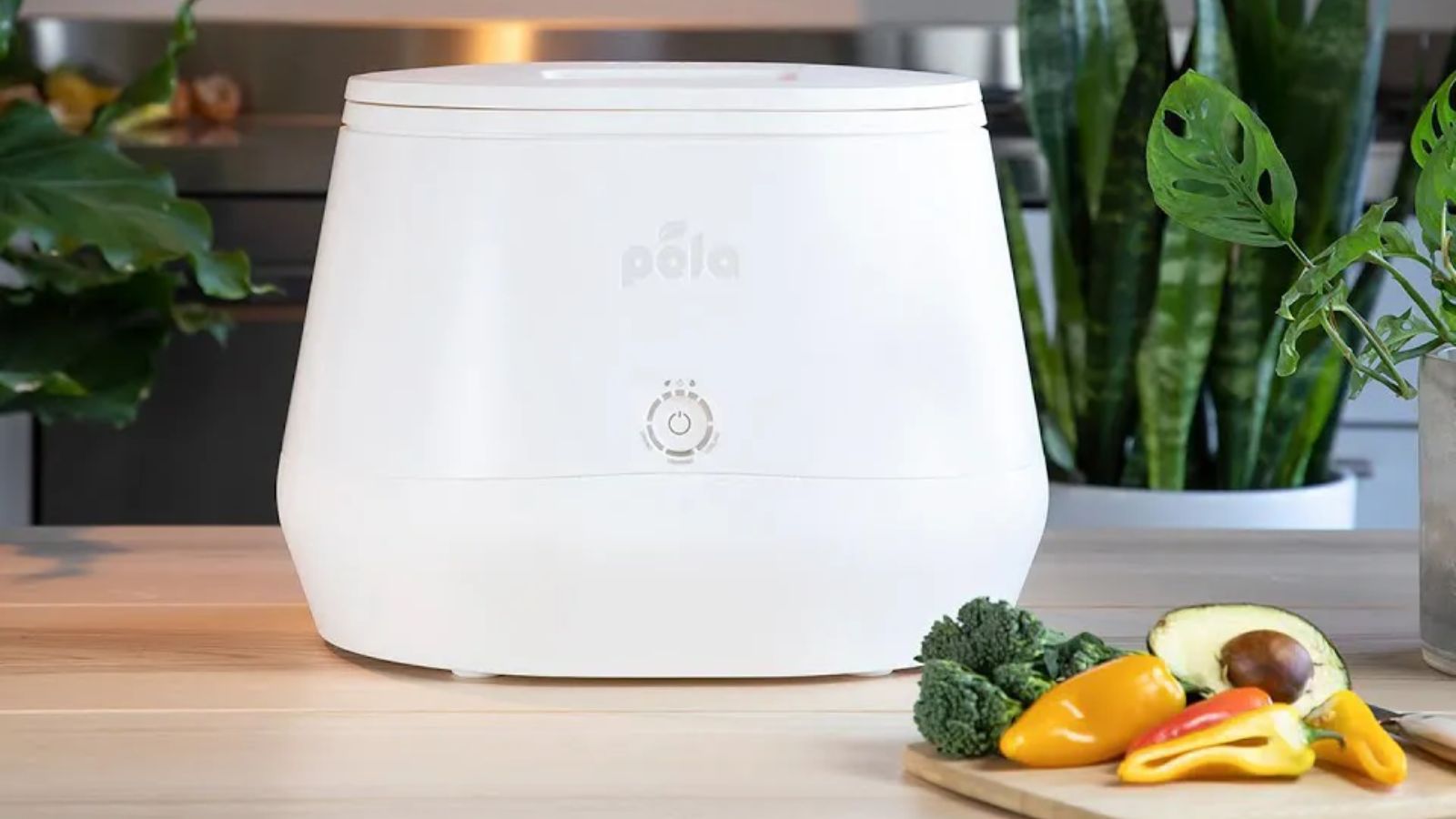
It does exactly what it claims to and it does it really well. But I just can't justify the price for something that the average household won't be able to make the most of. Unless you are really determined to make your own compost but lack the space or time to do it outside, the Lomi is not going to solve your food waste woes.
-
+
Accelerates the composting process to take less than a day
-
+
A fun and easy way to make compost without mess
-
+
Makes the most of food waste
-
+
Can break down bio-plastics
-
+
Reduces food waste volume and smelly scraps in your kitchen
-
-
Expensive
-
-
Takes up a lot of space on your counter
-
-
The best cycle for composting can take up to 20 hours
-
-
Not kind to your electricity bills
-
-
Gets stuck if you leave waste in it for a few days
You can trust Homes & Gardens.

I hate waste of all kinds, but food waste makes me feel particularly guilty. One reason is I really love food, but also, it is criminal to throw food away when many go without.
However, some food waste is inevitable as we can't eat every pit, peel and pith that comes about as part of prepping our meals. Many areas have great food waste schemes to tackle this, but if like me, you live in a place without, your options are putting it in the trash or composting it. I do compost what I can, but my compost heap is at the end of my 250-foot garden, and composting takes six months to a year, so I am perhaps not the active composter I wish I was.
So when Lomi offered to send me their new countertop composter, I was intrigued. It promises to turn food waste into usable compost in just one day. Or, if you simply want to decrease the volume of stuff going in your kitchen trash can, it can turn biodegradable elements from bulky buckets into small handfuls in as little as three hours. It can even break down bio-plastics like the bags many eco-conscious companies are using for packaging these days (Lomi included).
A final selling point is that thanks to carbon filters, it won't emit smells. So if you are sick of the stench from your regular countertop compost bin, or find it attracts fruit flies, you will be well rid.
Sounds amazing. But with prices starting at just under $500 this investment was going to need to earn its keep. Found out how I got on with it in my small country kitchen.
Product specifications
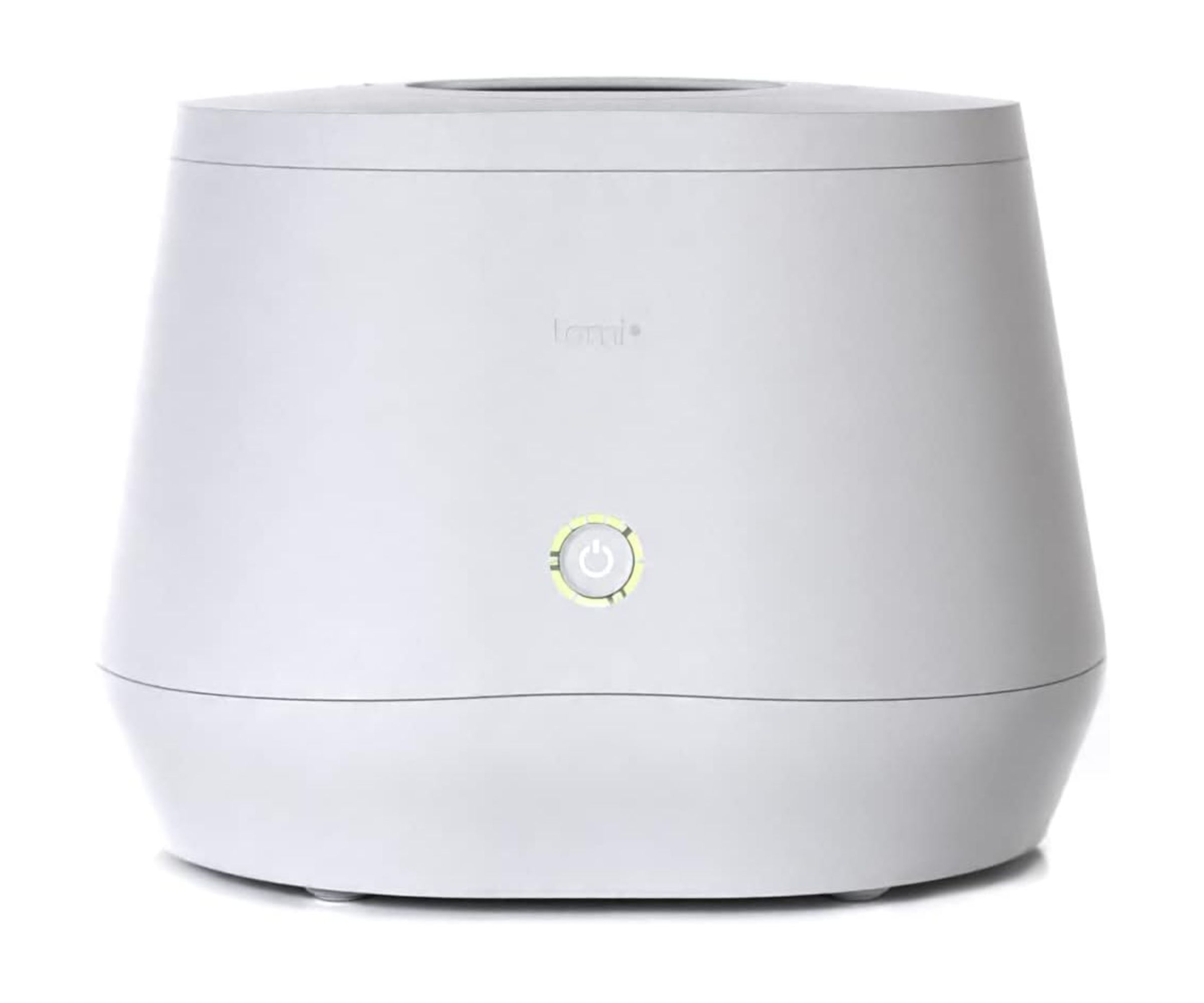
| Weight | 20lbs |
| Power | 500W |
| Dimensions | W16" x D13" x H12" |
| Cycles | Eco express (3–5 hours), Lomi approved (5–8 hours), Grow (16–20 hours) |
| Capacity | 3qt |
| Color | White |
| Cleaning | Dishwasher-safe bucket, wipe clean exterior |
| Energy Consumptions | 0.6–1 kWh |
| RRP | $499 |
Who would it suit?

If you have a big kitchen – perhaps with a laundry room to keep this out of the way doing it's thing – and you can't make compost as quickly as you use it, then this is certainly for you. It does a really good job of making your fruit and veg waste into a substrate for your garden or houseplants. Grow mode is expensive to run for just this use, but if you get the mix right in Eco-express mode and then put that product into a composter outside to cure over time, you will still get more from your leftovers without needing to get super invested in composting outside.
The other person this would suit is someone with no outside space for composting but a balcony or home filled with plants. If they are really keen to compost this would be the best way to do it inside to avoid pests and smells.
Design expertise in your inbox – from inspiring decorating ideas and beautiful celebrity homes to practical gardening advice and shopping round-ups.
These are quite specific use cases though, and at that price, this machine really needs to justify its existence. And for the majority, I just don't think it does that. If you have a small kitchen, it won't be reducing your trash enough to balance the space it needs on your counter.
Also, while in the UK we don't have garbage disposals, many US homes do. So while I found it handy to cut my waste into something cleaner and smell-free, you might not find that such an issue if you do have a garbage disposal unit. They are very efficient to run and would cost less for after-dinner cleanups.
Also, because Lomi can't make nice soil from everything you will want to be throwing away, it is not some magic pill to the issue of food waste. That leftover pizza will still be destined for your bin unless you are will to store up things you process in Eco-express or Lomi mode and cure them in a composter outside. Isn't that adding more steps when you could just wait to compost it normally?
So, while it does exactly what it is meant to, I just don't think the average person would get the most of out it.
Unboxing and set up

The Lomi makes a great impression when it arrives. It comes in a box listing all of the things it loves to compost including apple cores, leftover lasagna, peanut shells and even 'that pancake fail' Friendly messages aside, you will be pleased to find it is almost entirely packaged in recycled cardboard and a large bio-plastic bag to protect the unit.
The only bits that were recyclable or compostable were the plug protector and cable tie, but I am industrious – these will go to use somewhere in my home.
We are always impressed when a company takes strides to limit the impact of their packaging, but it would have been a major flaw if the Lomi – a concept born from our want to be eco-conscious – came encased in unnecessary plastics.
What's it like to use?
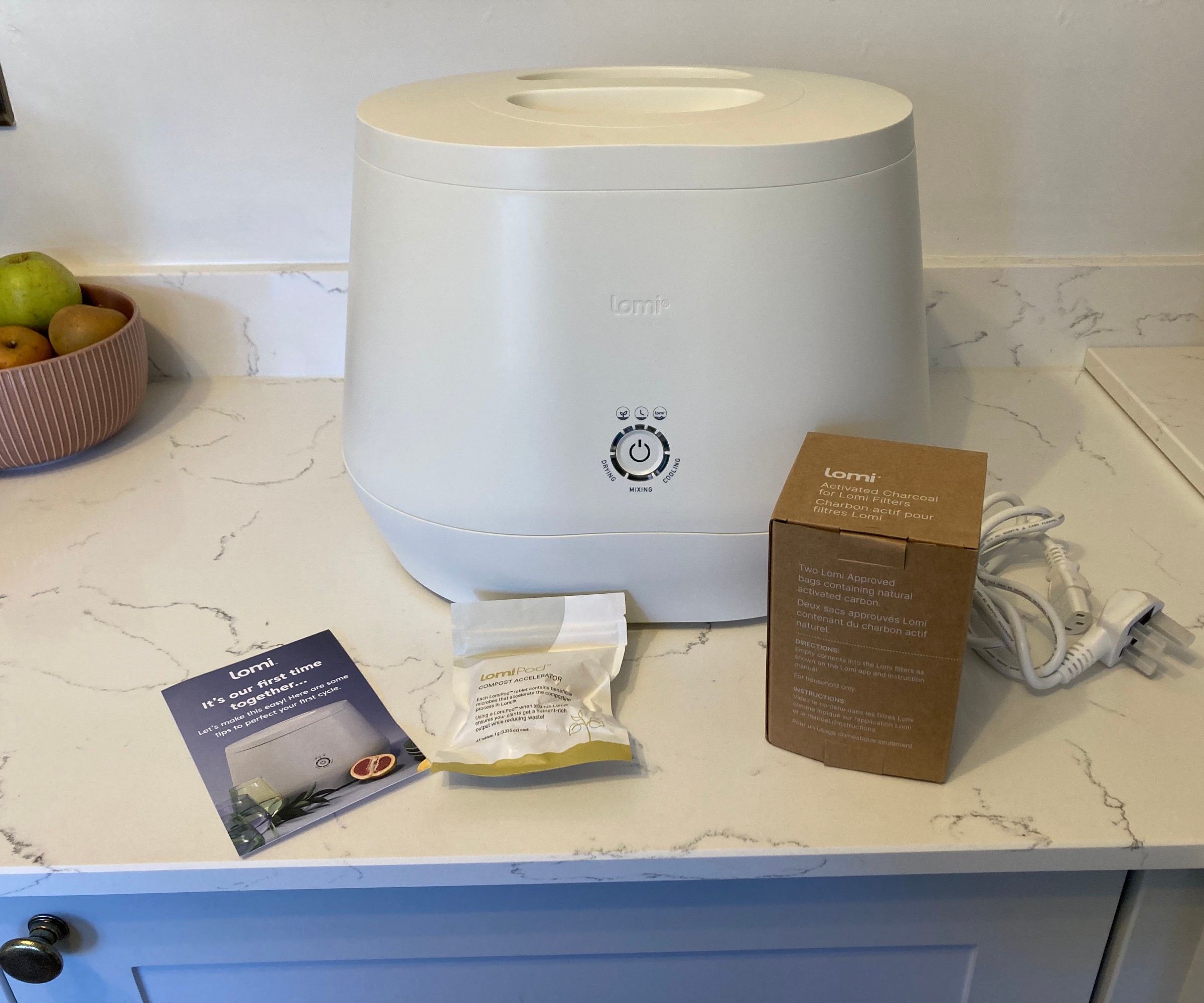
The unit comes near-enough fully constructed. The compost bucket is in place and all you have to do is fill the two filters with activated carbon (which is supplied) and plug it in.
You get two bags of activated carbon with the Lomi and can buy more online, but note each fill is meant to last at least 45 uses. There should be enough for 90 uses here.
Filling the filters was really easy. The one at the back of the unit is hidden behind a ventilated panel that unclips. Then you take the lid off the filter by unscrewing the wingnuts – no tools required.
You can fill the Lomi up over several days until it is full to the fill line, though it will work with lower quantities too. I think it is best to get it to capacity though so that you use it most efficiently. The instructions tell you to chop larger food waste up to help it along and avoid large pits like avocado stones. As well as fruit and veg waste, the Lomi will take plant clippings, meat and also can break down bio plastics in the Lomi mode.
The Lomi has three different cycles and you choose depending on what you need from your waste (more details on each cycle below). The operation is simple though. Once your Lomi is constructed and plugged in, you simply switch it on and it comes on in default mode. To change to a different mode, you hold the button for two to three seconds to pan between the different options. When you reach your choice, press the button once to start the cycle.
It is simple as that. Leave it to it and it will show you what stage it is on my illuminating the drying, mixing or cooling lights.
Test 1: Eco Mode
I wanted to get going with the Lomi as soon as I opened it, so I decided to try out Eco-express mode on a few bits of food waste and some dead leaves from my houseplants. This quick setting is designed to reduce your waste in three to five hours. The end product is not ready to use compost – but you could take the remains and cure them in a composter outside. The main benefit of this mode, is to minimize the volume of your food waste as it can take everything from veg peel to leftover meals containing dairy.
The bucket wasn't very full, but I had a good mix of a squeezed lime cut into quarters; half a lemon; an apple core; some plant clippings; egg shells; coffee grounds; cheese rinds; plus some discarded bits of onion peel.
After replacing the lid, I selected Eco-express mode and pressed the button to start. It makes a low whirring noise, not dissimilar to a bread maker. Once I shut my kitchen door, I could barely hear it.

It took a little over three hours to mix and dry the contents. As you can see above, the results were similar to soil mixed with bits of bark and it was less than half the volume of what I put in. I was definitely impressed with how it did this and could see myself using this setting every day to tidy leftovers and stop trash piling up.
Test 2: Lomi-approved mode
The Lomi-approved mode is also designed for reducing waste volume, but unlike Eco-express, it is the best setting to use if you need to get rid of bio-plastics, paper or card. It takes a little longer than the eco mode, at a minimum of five hours, but it can process pretty much anything you put in it.
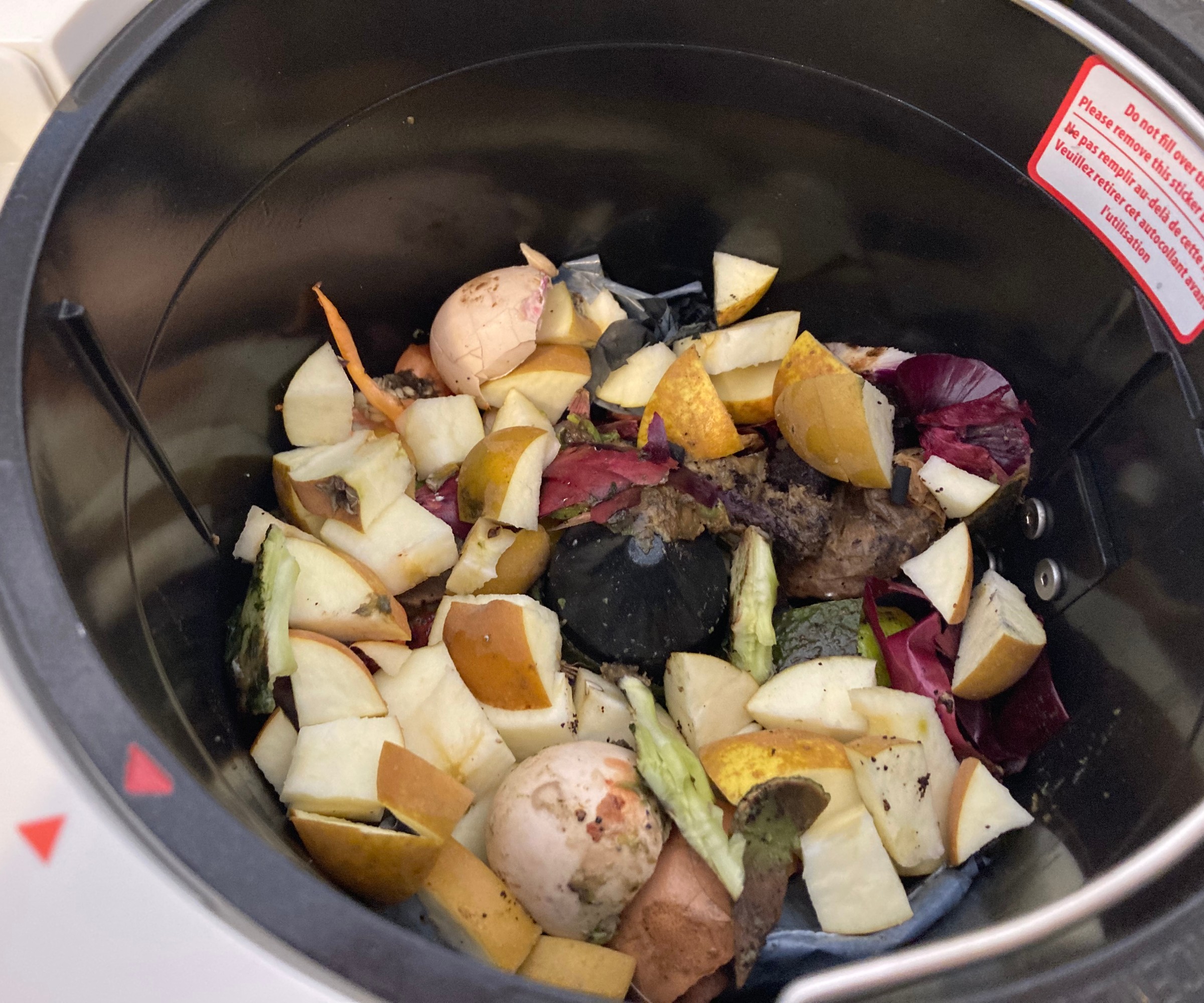
While bio-plastics will break down, you generally wouldn't want to add them to your compost. So if you want to make organic matter without plastic or card to go on to make compost, Eco-express is a better choice as it is quicker and uses less energy.
I filled the bucket about half full on my first use and included one of the bio-plastic bags from the Lomi packaging. It took around five hours to mix, dry and cool the contents and again I was left with a soil like mix that I put in the trash.

It didn't sound much louder than Eco-express mode but I got out the Decibel X app on my phone to get a reading. With a max of 59.5 dB and an average of 57 right next to the unit, it is pretty unobtrusive and much quieter than other household appliances like vacuums and blenders.
Test 3: Grow Mode
Grow mode is as the name suggests. It turns your waste into a nutrient-rich compost, ready for use in your garden or plant pots. Like the other modes it can take veg and yard trimmings, eggs, tea and coffee, peels and fruit scraps. However it will not take leftover meals, dairy, oily things like nuts and seeds or anything sticky. Anything very processed will impact the texture and quality of the soil made in Grow mode so best avoided.
I used a mix of peelings, egg shells and some coffee grounds, limiting the quantity of fruit rind and apple in this mix for the best results.
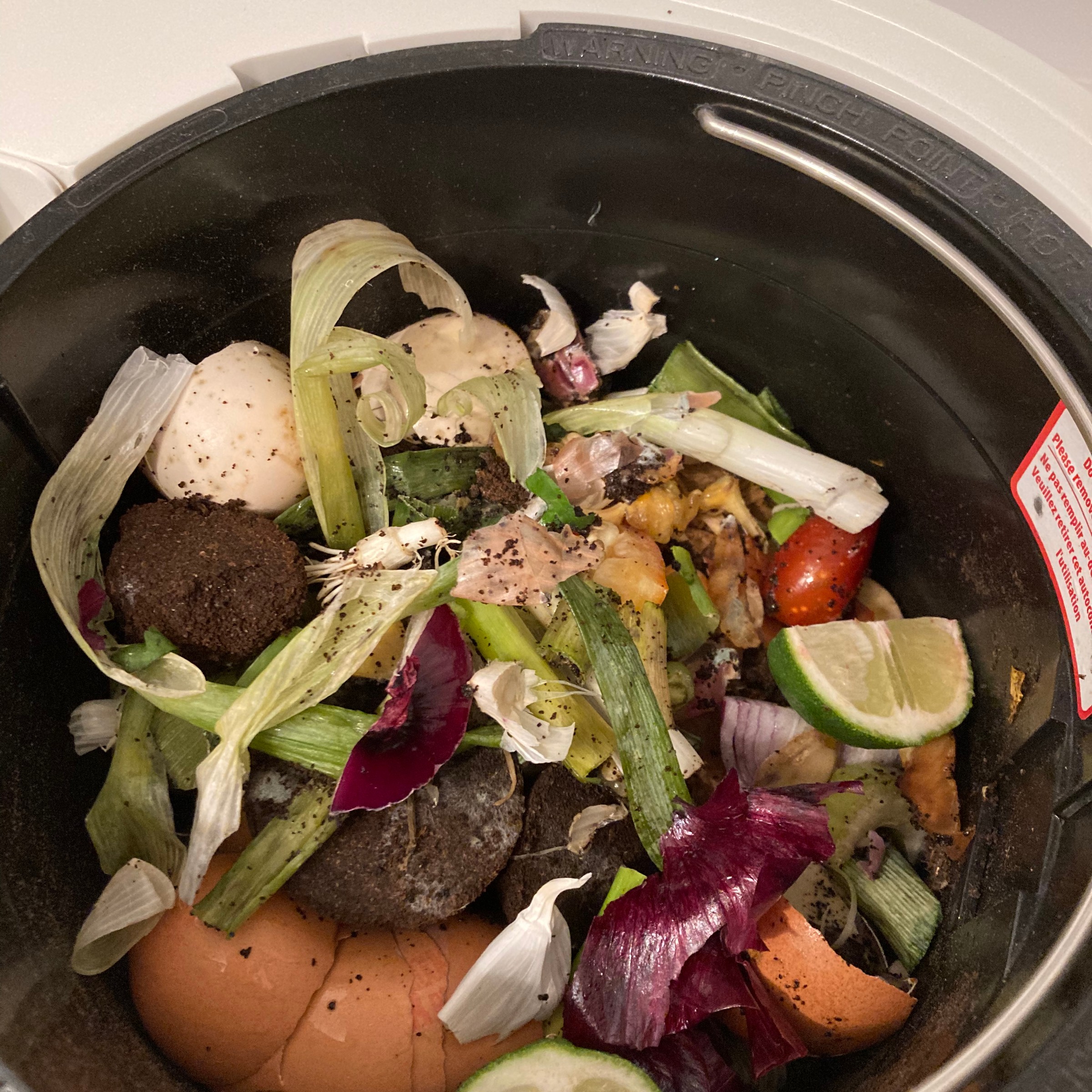
This setting took a while. I don't know the exact time as I went out after it had been running for about 17 hours, but it was done by the time I got back which was just before the 20-hour mark.
The compost made in Grow mode is noticably different. It is drier and finer and with a little water added, it made a great product to mix into my coir houseplant mix. It took a VERY long time, but if you're looking to get the most from your food waste in less time than regular composting takes, this is it.
That said, because it can't process a lot of your regular leftovers like anything fatty or too rich, you do need to plan ahead a bit to get the perfect mix to put in Grow mode – segmenting off the best bits to save for when you have enough to warrant a cycle. If I had a bigger family, and we were growing our own food though, this would be great. There would be more fruit and veg peels to put to use and running it in Grow mode once a week would soon give you a good source of compost to spread straight onto your garden or set aside for planting.
Using the Lomipods
The Lomi comes with a pack of LomiPods which are basically a micro-organism tablet that will accelerate the breakdown of organic material, meaning better results on the Grow mode. These were really easy to use: you just add to the bucket with a quater-cup of water before you start the cycle. The results looked pretty similar and it makes no difference to the time it takes to make the compost, but you should be left with a more nutrient-rich compost. The true test of this will be growing something side by side using compost from grow cycle both with and without the LomiPods, but I will leave that test till next summer.
How to clean your Lomi
This is nice and simple. The bucket is dishwasher friendly. Due to the process, it doesn't get too dirty. I found I could use it a few times and just give it a wipe out between if needed as the contents end up very dry. The outside can be wiped too with a damp cloth as needed.
The carbon pellets need replacing every 45 cycles. You can buy them from Lomi and it costs $59.90 for enough for 90 cycles, though they offer subscribe-and-save with 10 per cent off, and frequently run other promotions.
How much does it cost to run?
The makers of Lomi claim it uses roughly the same amount of power to operate an oven for 15 minutes. But what does that look like in terms of kilowatt hours and cost?
After all, this product is meant to help reduce your carbon footprint, so the last thing we want is it using loads of energy.
We worked out how much each cycle could cost based on the national average costs of electricity. In the US, this is 20¢/kWh.
| Mode | Cycle length | Avg energy consumption | Avg cost |
|---|---|---|---|
| Eco Express | 3-5 hours | .60 kWh | 1.8–3kWh = $0.36–$0.60 |
| Lomi-Approved | 5-8 hours | .75 kWh | 3.75–6kWh = $0.75–$1.20 |
| Grow Mode | 16-20 hours | 1 kWh | 16–20kWh = $3.20–$4 |
After doing the math, using the Lomi on Eco-express mode is not bad at all. It is a small price to pay for a more convenient and cleaner route to food waste disposal.
However, I think the cost of using Grow mode is pretty high when you consider how it doesn't cost that much more to buy a bag of compost (and a bigger one at that). Sure, you are preventing something else from going to waste in the process, but if that really bothers you then it is much cheaper to throw it on a compost heap and wait six to 12 months.
As for Lomi's claim that it costs the same to run as an oven, they aren't technically wrong – but when would you ever need to run your oven for more than a couple of hours. To us, this was a bit of a misleading statement to make.
My verdict
This machine really impresses. It does exactly what it claims, and if you want homemade compost ASAP, this takes hours rather than months. However, all the extra steps and the fact that it takes up so much countertop real estate mean that this composter has pretty limited use cases. Expensive to buy and costly to run, the average household would struggle to justify it.

Lindsey Davis has been writing about homes for most of the last decade. After a brief stint in children's publishing, she cut her teeth working on the website for UK brand Homebuilding & Renovating, writing about unique self build homes. She has since worked on the websites of other Future homes brands including Real Homes, Livingetc, Gardeningetc and Ideal Home where she helps readers find the best products for their properties. She lives in a British Victorian cottage which lacks in space, but makes up for it with period features aplenty. And, if she isn't busy redecorating her own home, she loves using the inspiration she finds in her working day to help her friends and family with their own projects.